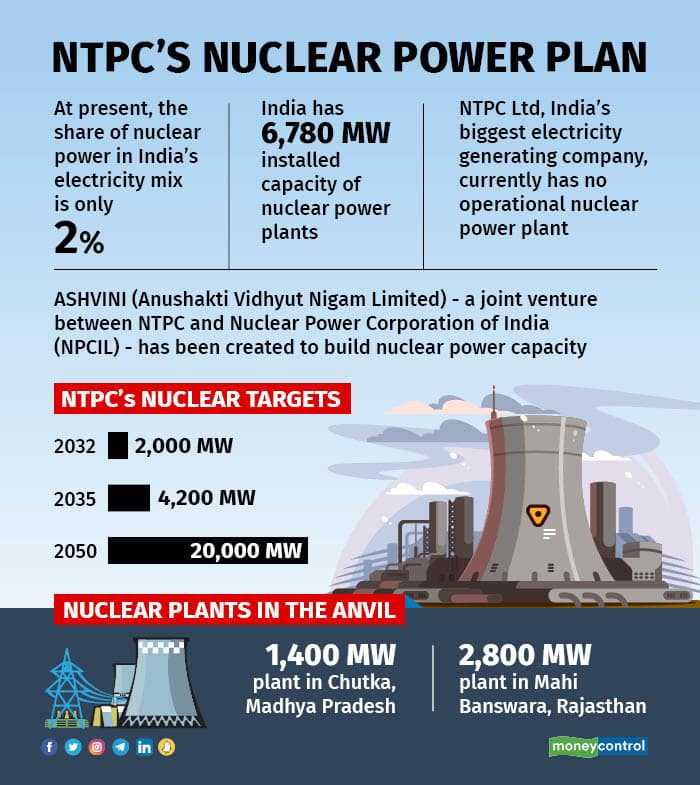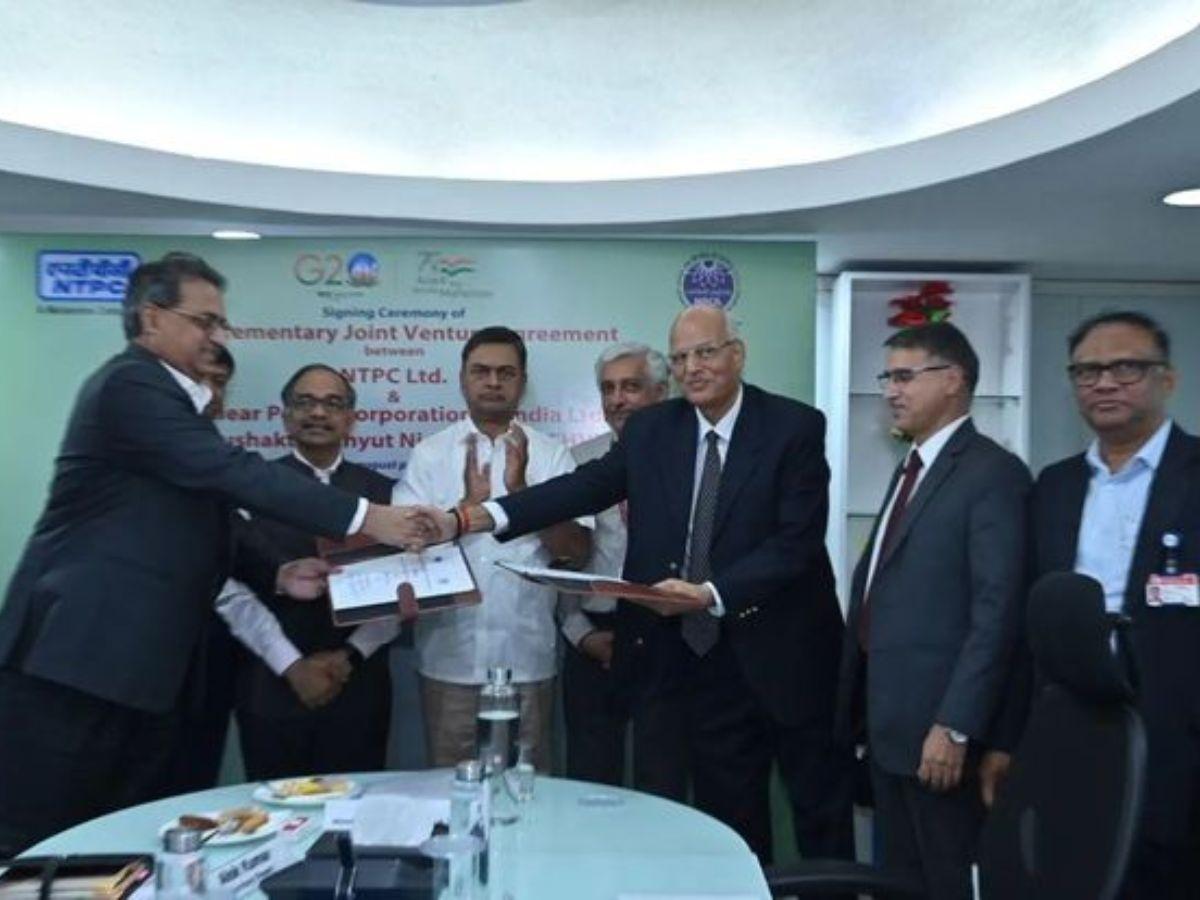NTPC and NPCIL sign joint venture agreement to develop nuclear power projects:
India’s push towards clean energy sources took another leap forward on May 1, when the National Thermal Power Corporation (NTPC) signed a supplementary joint venture agreement with the Nuclear Power Corporation of India Limited (NPCIL) to develop nuclear power projects in the country. The two companies will initially focus on developing two pressurised heavy-water reactor (PHWR) projects: the Chutka Madhya Pradesh Atomic Power Project (2×700 MW) and the Mahi Banswara Rajasthan Atomic Power Project (4×700 MW). These projects were identified as part of fleet mode nuclear projects.
NTPC, which is India’s largest power producer, is aiming to generate 2,000 MW of nuclear energy by 2032, 4,200 MW by 2035, and eventually scale up to 20,000 MW by 2050. As well as adding capacity through PHWRs, the company is also planning to use small modular reactors. To ensure feedstock availability, it is also planning fuel tie-ups with Uranium Corporation of India Limited.
Buy Prime Test Series for all Banking, SSC, Insurance & other exams

India’s nuclear power capacity and the push for clean energy:
According to the Central Electricity Authority, India’s installed nuclear power capacity currently stands at 6,780 MW, which represents just 2% of the country’s total energy mix (including thermal, hydro, and renewables). The Indian government has approved the installation of 10 nuclear reactors to meet the country’s growing power demand, which will be set up progressively by 2031 in fleet mode, at a cost of Rs. 1,05,000 crores. These reactors are expected to generate a total of 7,000 MW.
As well as adding to India’s energy mix, the development of nuclear power projects is a crucial step towards the country’s commitment to achieving net-zero emissions by 2070. Nuclear energy is a zero-emission clean energy source, as it generates power through fission, which involves splitting uranium atoms to produce energy. The heat released by fission is then used to create steam that spins a turbine, generating electricity without harmful by-products emitted by fossil fuels.
Project implementation and costs:
The Chutka and Mahi Banswara nuclear projects will be implemented through a joint venture between NTPC and NPCIL called ASHVINI. The Chutka project is expected to cost approximately Rs. 25,000 crore, while the Mahi Banswara project will cost approximately Rs. 50,000 crore.
The 10 reactors approved by the Indian government will be installed at four locations, with two each at Kaiga (Karnataka), Gorakhpur (Uttar Pradesh), and Chutka (Madhya Pradesh). Four reactors will be installed at Mahi Banswara (Rajasthan).
Also Read: IIT-Bombay and UIDAI join hands to develop touchless biometric system



 Indian Olympic Medal Winners List Till N...
Indian Olympic Medal Winners List Till N...
 Who is the Inventor of the Gramophone?
Who is the Inventor of the Gramophone?
 HS Dhaliwal Appointed New DGP Of Andaman...
HS Dhaliwal Appointed New DGP Of Andaman...
